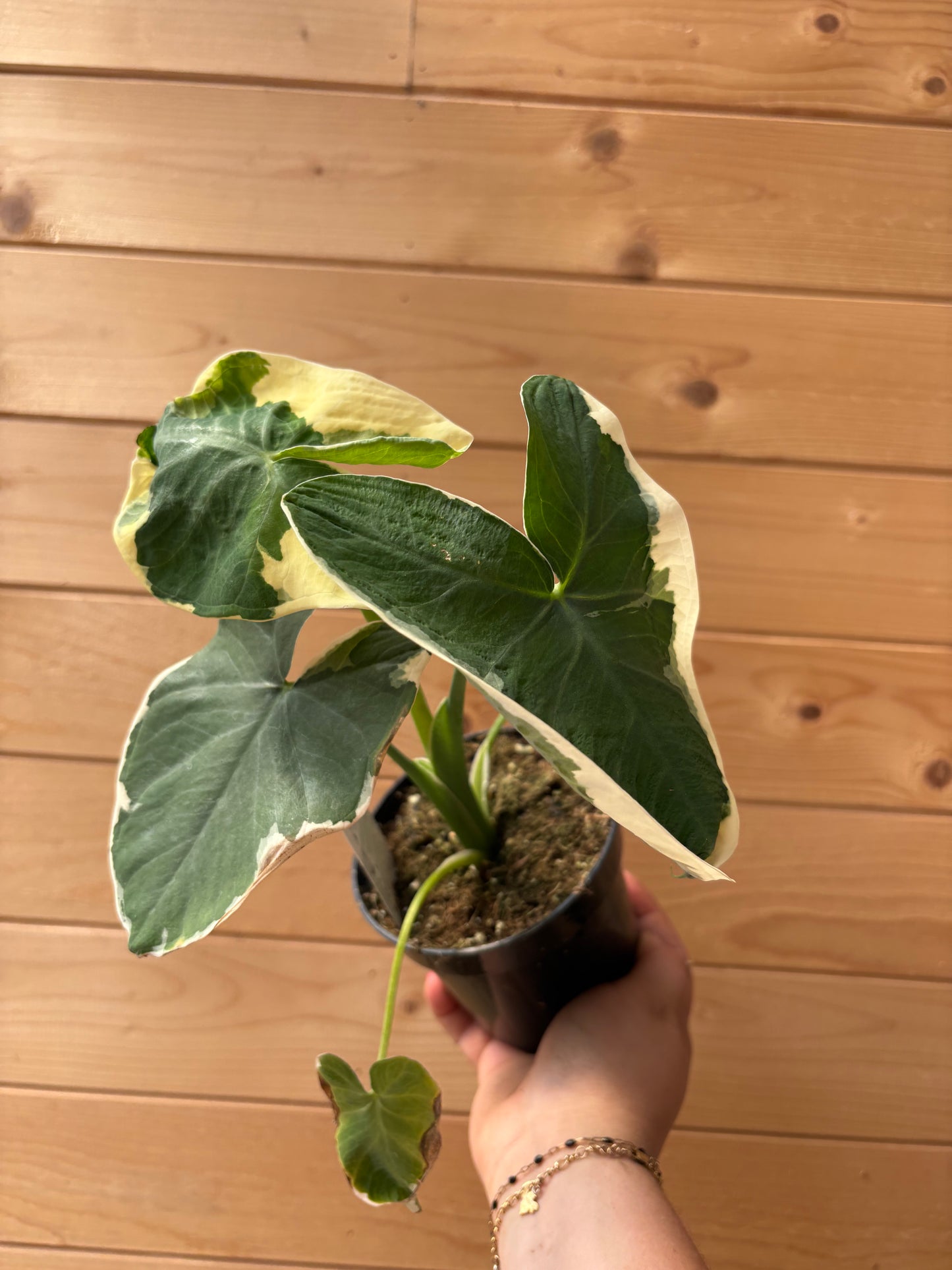Riverdene Garden Centre
4" Mickey Mouse
4" Mickey Mouse
Couldn't load pickup availability
Alocasia ‘Mickey Mouse’ – Care Guide
Overview
Alocasia ‘Mickey Mouse’, also known as Alocasia x ‘Frydek Variegata’ or Alocasia ‘Variegated Elephant Ear’, is a rare variegated cultivar prized for its broad, heart-shaped leaves with irregular white and green marbling. Its name comes from the whimsical, ear-like shape of the leaves, reminiscent of Mickey Mouse’s silhouette.
This plant is highly desirable among collectors for its striking foliage and unpredictable variegation, which can range from solid green to fully white sectors on each leaf.
Key Characteristics
Botanical Name: Alocasia sp. (likely a variegated form of Alocasia macrorrhizos or Alocasia odora)
Common Name: Mickey Mouse Alocasia, Variegated Elephant Ear
Plant Type: Tropical evergreen perennial
Growth Habit: Upright, clumping
Mature Size: 3–5 feet tall indoors, larger in tropical outdoor climates
Leaf Size: 12–24 inches long when mature
Foliage: Broad, shield- or heart-shaped with unpredictable white/cream marbling or sectors
Rarity: Rare collector plant
Light Requirements
Bright, indirect light is ideal to maintain vibrant variegation
Can tolerate dappled sunlight
Avoid direct sun, which can scorch white portions of leaves
Too little light may cause loss of variegation and leggy growth
Watering Needs
Keep soil consistently moist but not soggy
Water when the top 1–2 inches of soil feels dry
Reduce watering in winter when growth slows
Use distilled or filtered water if your tap water is high in minerals (to prevent leaf browning)
Soil & Potting
Requires well-draining, airy soil
Ideal mix: a blend of peat/coco coir, perlite, orchid bark, and a bit of compost
Pot must have drainage holes
Repot every 1–2 years as the plant grows
Temperature & Humidity
Prefers warm, humid conditions
Ideal temperature: 18–27°C (65–80°F)
Cannot tolerate cold – protect from temperatures below 15°C (59°F)
Needs high humidity (60–80%)
-
-
Use a humidifier, pebble tray, or group with other plants
-
Misting is not very effective for sustained humidity
-
Fertilizing
Feed monthly during spring and summer with a balanced liquid fertilizer
Reduce or stop feeding in fall/winter
Avoid over-fertilizing – white variegation is more sensitive to excess nutrients
Common Problems
Leaf yellowing: Overwatering or poor drainage
Brown edges: Low humidity or water with high mineral content
Pests: Watch for spider mites, mealybugs, and thrips
-
-
Treat with neem oil or insecticidal soap
-
Drooping leaves: Often caused by underwatering or sudden temperature drops
Toxicity
Toxic to pets and humans if ingested (contains calcium oxalate crystals)
Keep out of reach of cats, dogs, and children
Special Notes
-
Rare and expensive in the houseplant trade — often sold as nodes or pups
-
White leaf sections don’t photosynthesize, so avoid fully white plants if you're aiming for long-term health
-
New leaves may vary in variegation — this is normal and part of the plant’s charm
Share


